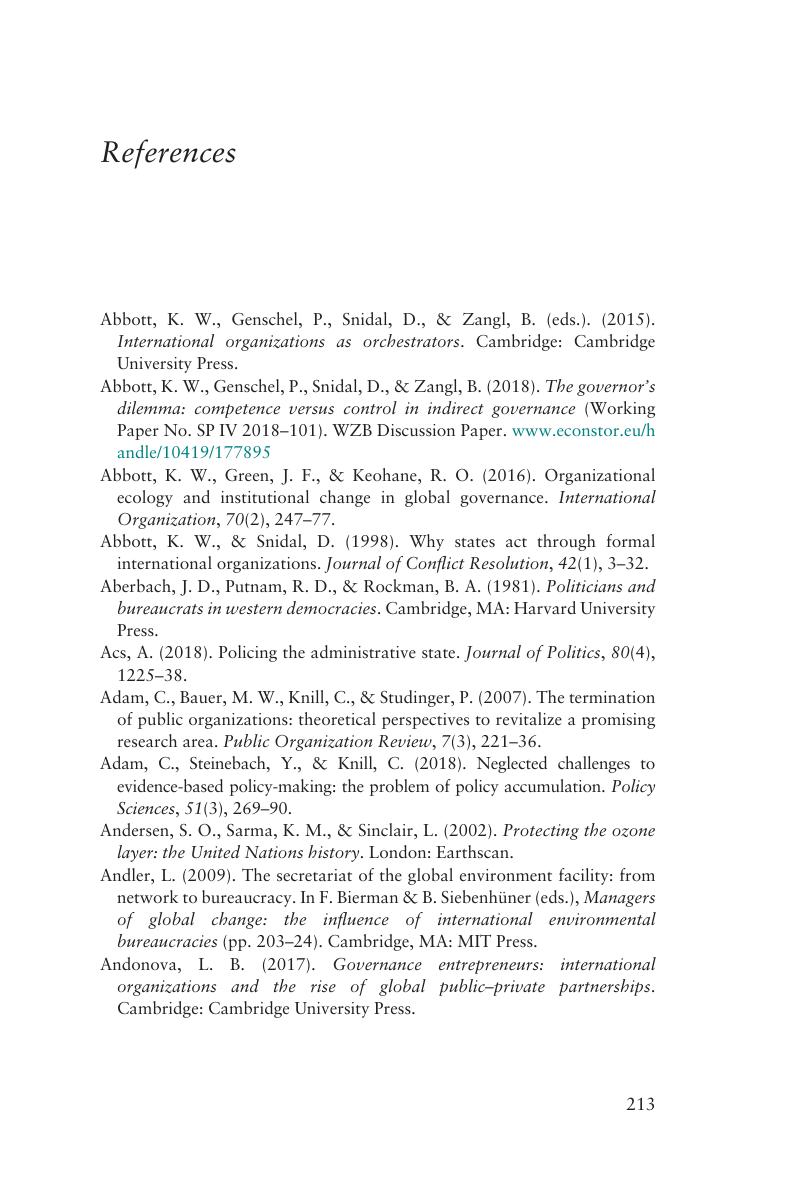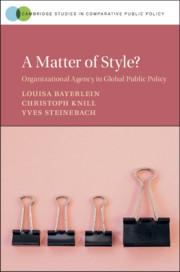Book contents
- A Matter of Style?
- Cambridge Studies in Comparative Public Policy
- A Matter of Style?
- Copyright page
- Dedication
- Contents
- Tables and Figures
- Preface
- Abbreviations
- 1 Introduction
- 2 Conceptualizing and Explaining Bureaucratic Influence: Administrative Styles
- 3 Observing and Explaining Administrative Styles: From Concept to Empirical Analysis
- 4 The IMF and the UNHCR
- 5 The IOM and the FAO as Consolidators: Struggles of the Challenger and the Challenged
- 6 Advocacy at UNEP and the WHO: How Expertise and Common Beliefs Shape an Administrative Style
- 7 NATO and the ILO as Servants: the Dedicated Steward and the Saturated Dinosaur
- 8 Conclusion
- References
- Index
- References
References
Published online by Cambridge University Press: 04 July 2020
- A Matter of Style?
- Cambridge Studies in Comparative Public Policy
- A Matter of Style?
- Copyright page
- Dedication
- Contents
- Tables and Figures
- Preface
- Abbreviations
- 1 Introduction
- 2 Conceptualizing and Explaining Bureaucratic Influence: Administrative Styles
- 3 Observing and Explaining Administrative Styles: From Concept to Empirical Analysis
- 4 The IMF and the UNHCR
- 5 The IOM and the FAO as Consolidators: Struggles of the Challenger and the Challenged
- 6 Advocacy at UNEP and the WHO: How Expertise and Common Beliefs Shape an Administrative Style
- 7 NATO and the ILO as Servants: the Dedicated Steward and the Saturated Dinosaur
- 8 Conclusion
- References
- Index
- References
Summary

- Type
- Chapter
- Information
- A Matter of Style?Organizational Agency in Global Public Policy, pp. 213 - 243Publisher: Cambridge University PressPrint publication year: 2020



